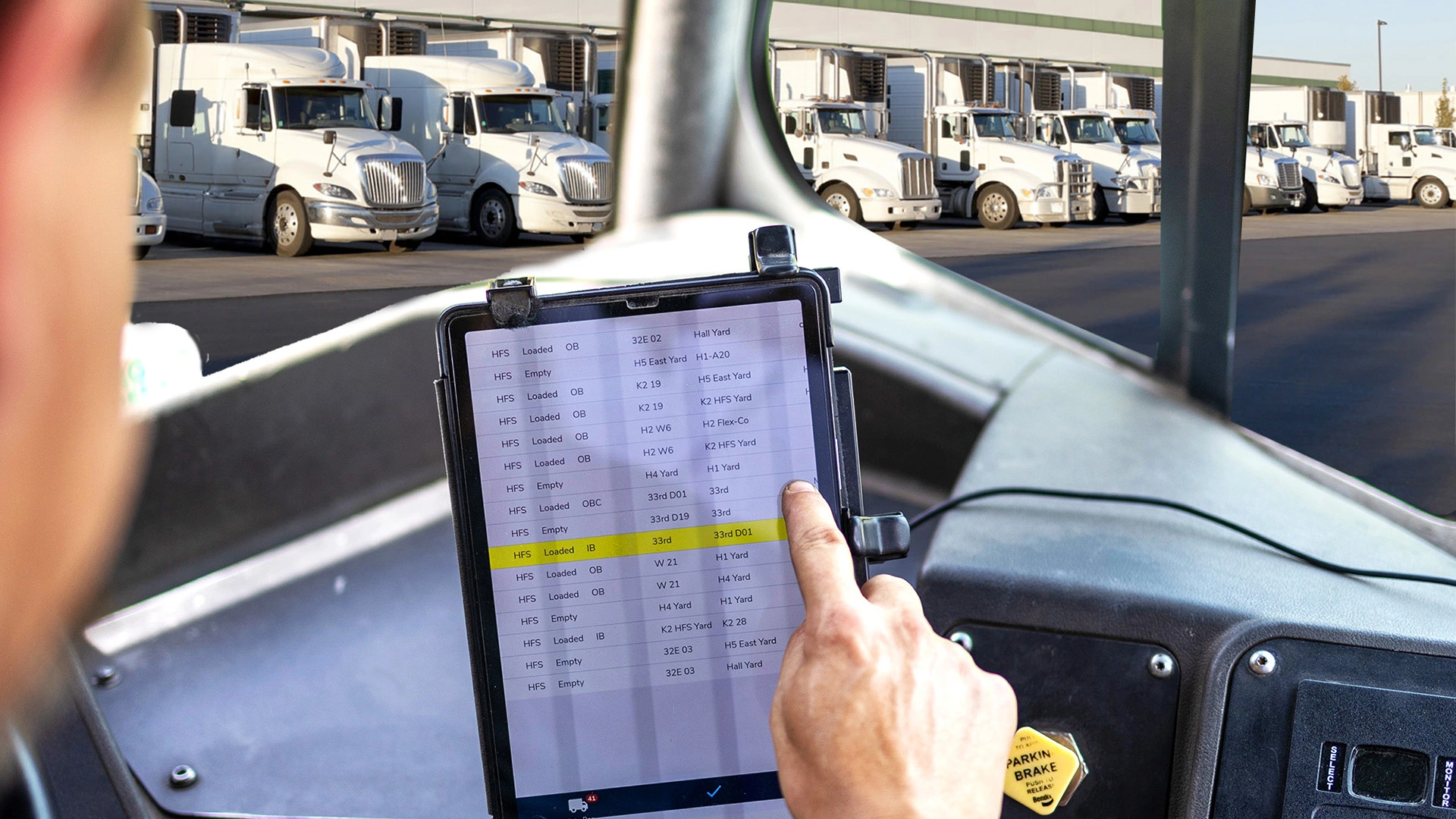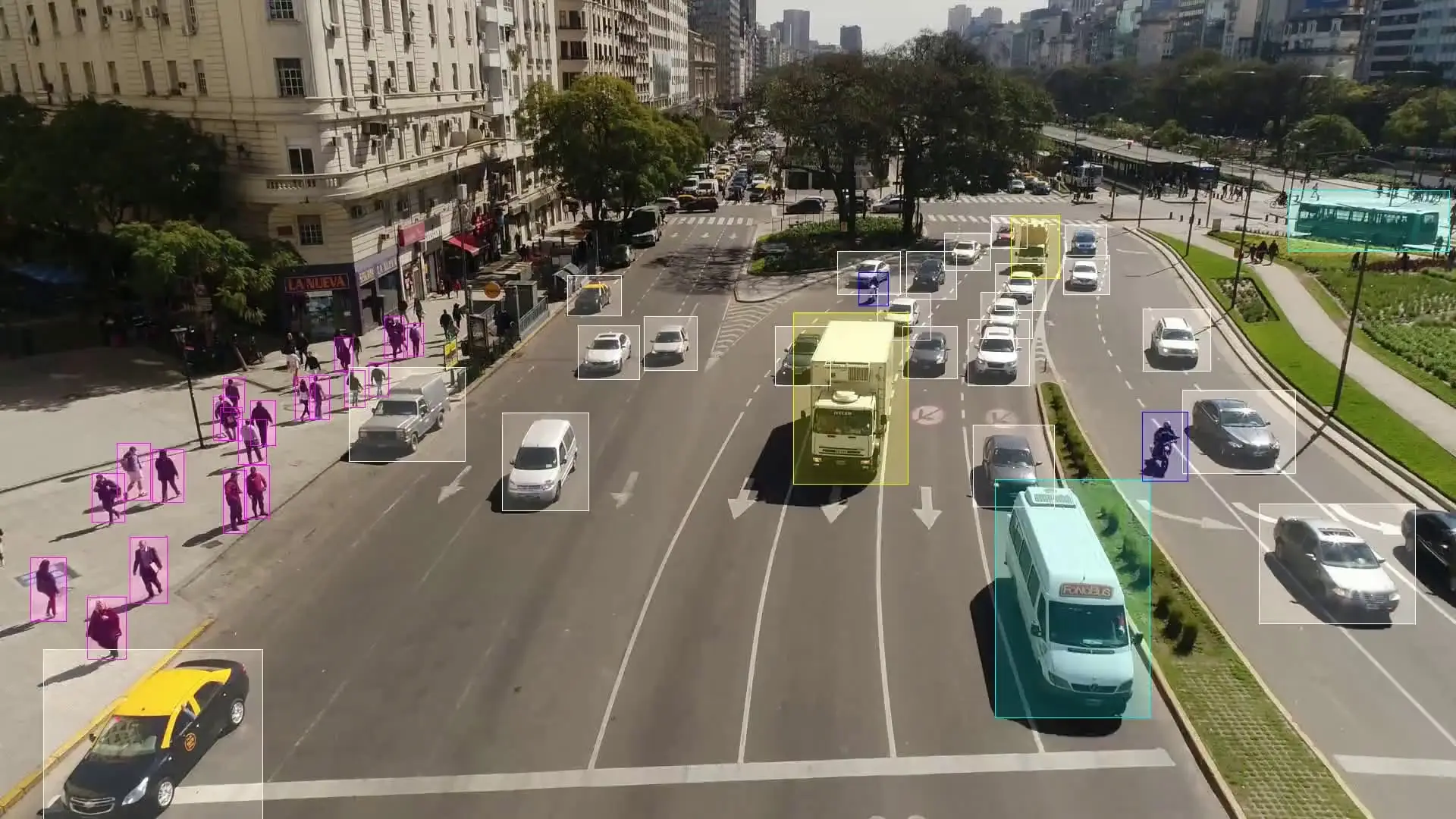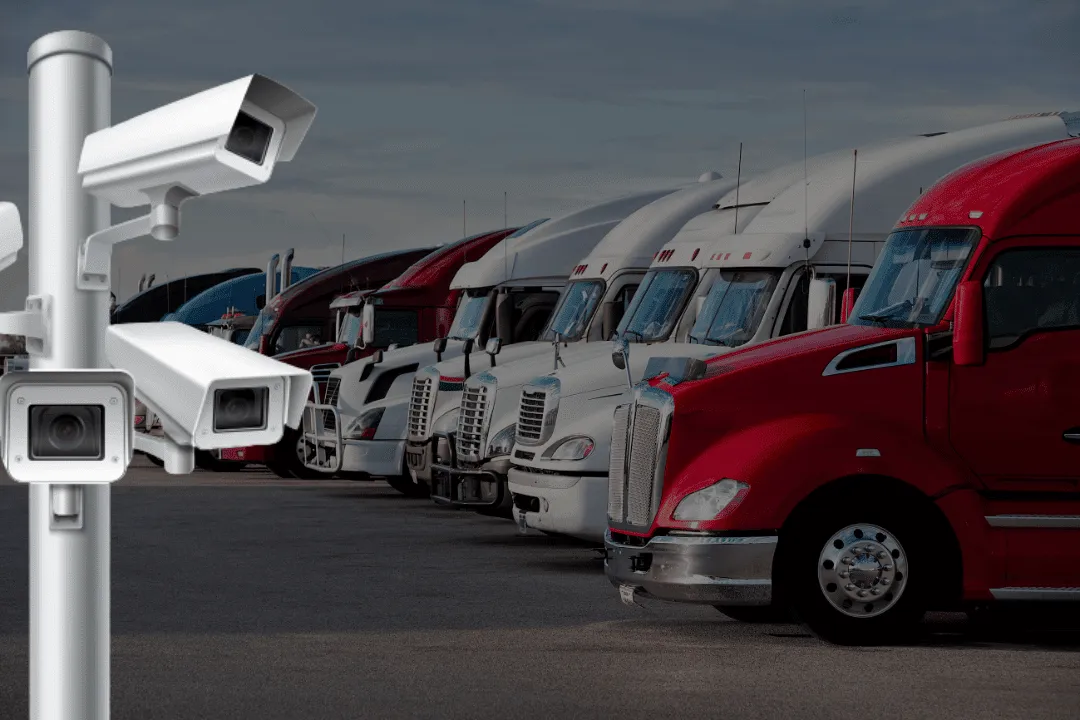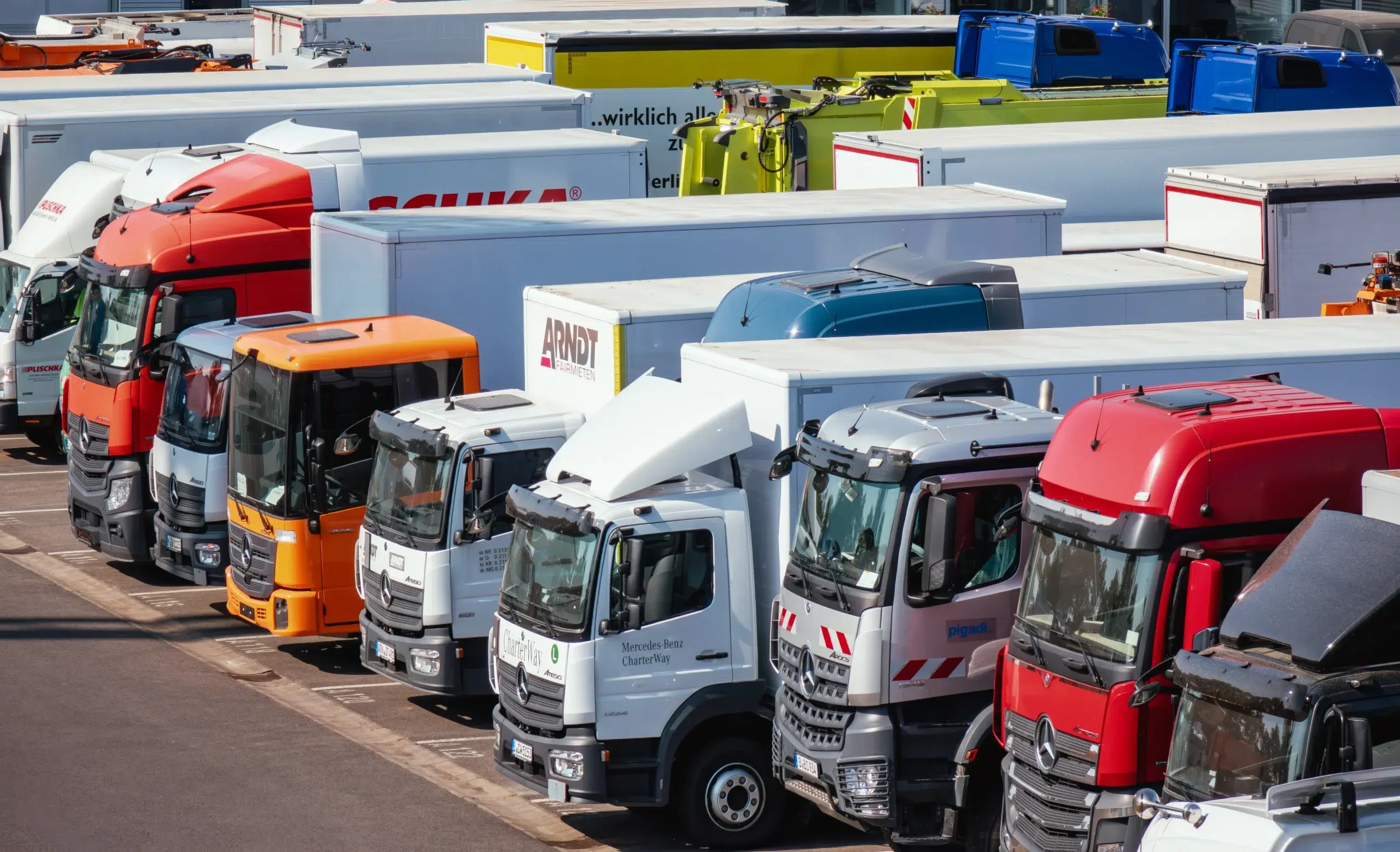"Where's trailer #212?" This seemingly simple question triggers a cascade of inefficiency in truck yards nationwide. Finding specific assets in sprawling logistics facilities has traditionally required manual searches, physical audits, and outdated whiteboard tracking systems. The result: wasted time, frustrated drivers, and operational bottlenecks that impact the entire supply chain. Multi-camera tracking technology and Yard Management Systems (YMS) are changing this paradigm, transforming asset location from a time-consuming challenge into a seamless digital experience.
The Hidden Cost of Asset Searches
Facility operators often underestimate the cumulative impact of inefficient asset location processes. Manual yard management processes invite inefficiency, such as limited visibility into yard activities and delays caused by misplaced assets. Without real-time data, delays proliferate as yard teams struggle to locate trailers and containers. Eaigle report that manual gate processing can cause delays of up to 20 minutes per vehicle .
The financial implications extend far beyond direct labor costs:
- Driver Detention: Increased dwell times at gates or in yards lead to detention charges and schedule disruptions.
- Equipment Utilization: Misplaced trailers and poor coordination cause idle assets and wasted labor hours.
- Operational Delays: Loading/unloading schedules are disrupted by asset location challenges, leading to longer dwell times and reduced order throughput.
- Customer Satisfaction: Delays cascade through the supply chain, affecting delivery commitments and customer retention.
Technological Solutions to Yard Inefficiencies
Yard Management Systems (YMS) provide real-time visibility into trailer activities within warehouses, docks, and other logistical stop points. These systems automate workflows, track assets, and optimize resource allocation based on real-time data feeds. For example, YMS solutions leveraging AI-based technologies can integrate with existing infrastructure like security cameras to automate identification and tracking processes.
Real-time location systems (RTLS) such as RFID or GPS further enhance inventory accuracy and streamline yard operations by reducing retrieval times and improving visibility across the supply chain.
According to ABI Research, inefficiencies in yard management account for roughly 80% of transportation delays. As global e-commerce demand continues to rise, adopting automated YMS solutions is critical for combating these challenges. ABI Research forecasts YMS revenue to exceed $3 billion by the end of the decade as manufacturers increasingly adopt these systems to address worker shortages, asset visibility issues, and complex distribution center networks.
Traditional Yard Management Approaches
Most logistics facilities continue to rely on surprisingly low-tech solutions for asset tracking:
1. Manual Yard Checks
The predominant method remains physical yard walks or drive-throughs, where personnel visually identify and record asset locations. According to YardView these audits typically occur 3 or more times daily for larger facilities, with an average yard check requiring anywhere between 30 minutes and 1.5 hours depending on facility size. Personnel document positions using paper maps, clipboards, or mobile devices, then update central tracking systems upon return to the office.
This approach suffers from several critical limitations:
- Information becomes outdated almost immediately after collection
- Human error leads to misreported locations and identification mistakes
- Labor-intensive process diverts personnel from value-adding activities

Credit: YardView
2. Whiteboard Systems
The notorious yard whiteboard remains a fixture in dispatch offices nationwide. These systems typically display a simplified yard grid where coordinators manually track asset positions using magnets, markers, or sticky notes. When drivers or yard personnel report moves, dispatchers update the board accordingly.
While inexpensive to implement, whiteboard tracking creates significant operational challenges:
- Requires constant manual updates to maintain accuracy
- Creates a single point of information accessible only to on-site personnel
- Provides no historical data or analytical capabilities
- Information cannot be easily shared across shifts or locations
3. Hardware-Based Location Systems
Some facilities have attempted to address these challenges through hardware-based approaches like RFID or GPS tracking systems. While these solutions can provide improved location data, they introduce their own set of challenges:
- High implementation costs for tags and infrastructure
- Ongoing maintenance requirements for thousands of physical devices
- Battery limitations affecting data reliability
- Integration complexity with existing yard management systems
As outlined in our previous article on The Hidden Costs of Hardware-Based Asset Tracking, these solutions often create as many problems as they solve.
The Multi-Camera Tracking Revolution
Multi-camera tracking represents a fundamentally different approach to yard visibility. Rather than requiring physical infrastructure attached to each asset, this technology leverages existing camera networks to create a comprehensive digital twin of the entire facility. These systems continuously monitor asset positions through computer vision algorithms, maintaining real-time location data without any manual intervention.
Technical Components
Modern multi-camera tracking solutions combine several advanced technologies:
- Spatial Calibration: Maps camera pixels to precise GPS coordinates
- Computer Vision: Identifies vehicles and equipment within camera views
- Trajectory-Based Tracking: Maintains asset identity across multiple camera fields
- Data Integration: Connects with yard management systems to maintain asset context
The key innovation lies in trajectory-based tracking, which allows the system to consistently identify assets as they move between different camera views. Unlike earlier computer vision approaches that relied on visual recognition, these systems track spatial movement patterns, enabling reliable identification even among visually identical equipment.

Credit: Viso.ai
Operational Benefits for Logistics Providers
The implementation of multi-camera tracking transforms yard operations in several key dimensions:
1. From Hours to Seconds: Instant Asset Location
The most immediate benefit is the dramatic reduction in asset location time. Instead of physical searches taking 30+ minutes, operators can instantly locate any asset through the digital dashboard. This capability alone can save hundreds of labor hours monthly while significantly reducing driver detention time.
A regional distribution center implementing multi-camera tracking can see an average search duration dropping from 27 minutes to just 45 seconds. More importantly, this capability is available 24/7, not just during scheduled yard checks.
2. Eliminating Manual Audits
With continuous real-time tracking, the need for manual yard checks disappears entirely. Personnel previously dedicated to these tasks can be reallocated to more productive activities like preventive maintenance, customer service, or operational improvements.
3. Enhanced Yard Planning and Utilization
Real-time visibility enables dynamic yard management previously impossible with manual systems:
- Strategic Positioning: High-priority assets can be placed for immediate access
- Density Optimization: Available space can be maximized without losing track of assets
- Bottleneck Identification: Areas with excessive congestion can be quickly identified
- Historical Analysis: Movement patterns can be analyzed to optimize future layouts
4. Real-Time Operational Visibility
Beyond basic asset location, multi-camera tracking provides comprehensive operational insights:
- Dwell Time Monitoring: Identify assets exceeding planned storage duration
- Movement Verification: Confirm assets have reached assigned positions
- Unauthorized Access: Detect when wrong assets are approached or moved
- Exception Handling: Automatically flag potential operational issues
These capabilities transform yard management from reactive issue-handling to proactive operation, enabling coordinators to address problems before they impact broader operations.

Credit: Spotter Security
Implementation Considerations
Organizations considering multi-camera tracking should evaluate several key factors during implementation planning:
1. Camera Infrastructure
Most facilities already maintain security camera networks that can be leveraged for tracking purposes. The implementation assessment should include:
- Evaluation of existing camera coverage and quality
- Identification of coverage gaps in critical areas
- Camera repositioning requirements
In most cases, existing camera infrastructure requires only modest enhancement to support comprehensive tracking capabilities.
2. System Integration
Maximum value comes from connecting multi-camera tracking with existing operational systems:
- Yard Management Systems: Combining asset context with location data
- Transportation Management: Coordinating arrivals with yard positions
- Gate Processing: Automatic tracking initiation upon entry
Making the Move to Multi-Camera Tracking
The transition from traditional methods to multi-camera tracking represents a pivotal shift in yard management strategy. Companies who make this investment not only gain immediate operational efficiencies but position themselves at the forefront of logistics innovation. With implementation times measured in days rather than months and ROI typically achieved within the first quarter of operation, the business case for this technology has never been stronger.
As supply chains face continued pressure to improve efficiency while minimizing costs, multi-camera tracking stands out as one of the most impactful technologies available to yard operators today. The simplicity of leveraging existing camera infrastructure, combined with the sophisticated capabilities of trajectory-based tracking, creates an ideal balance of immediate value and long-term strategic advantage.
